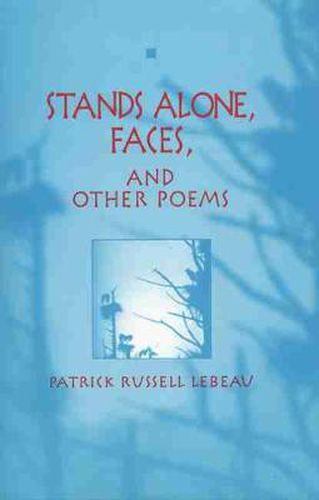Readings Newsletter
Become a Readings Member to make your shopping experience even easier.
Sign in or sign up for free!
You’re not far away from qualifying for FREE standard shipping within Australia
You’ve qualified for FREE standard shipping within Australia
The cart is loading…






Stands Alone, Faces, and Other Poems, Patrick LeBeau’s first collection, is a self-reflective work on identity, ancestry, and family relationships voiced in three parts. Stands Alone , the first voice heard, is the singular he - an entity lost in a sea of loneliness, loneliness that freezes growth and stagnates creativity. It places the self in a dizzy reality of emotions and knee-jerk reactions, cut off from the community. He wanders, seeking connections to land and community, but often finding confusion and despair and, occasionally, clarity and humour. Alone, he fends alone and suffers decisions made with only his counsel.
The voice in part two moves the he to embrace community and a place of identity exploration and discovery. A language is learned. A language of stories that enables him to link his own personal history to a larger Native community and experience. Through this found relationship with ancestry and family, he becomes receptive to spiritual teachings and cultural practices. Part three sets he free to consolidate the pieces of his memories and experiences into one, large creative net of experimentation and form. Desiring inclusion of personal history and reflections regardless of notions of good or bad, positive or negative, he finally settles on a skin he can live with and within.
$9.00 standard shipping within Australia
FREE standard shipping within Australia for orders over $100.00
Express & International shipping calculated at checkout
Stands Alone, Faces, and Other Poems, Patrick LeBeau’s first collection, is a self-reflective work on identity, ancestry, and family relationships voiced in three parts. Stands Alone , the first voice heard, is the singular he - an entity lost in a sea of loneliness, loneliness that freezes growth and stagnates creativity. It places the self in a dizzy reality of emotions and knee-jerk reactions, cut off from the community. He wanders, seeking connections to land and community, but often finding confusion and despair and, occasionally, clarity and humour. Alone, he fends alone and suffers decisions made with only his counsel.
The voice in part two moves the he to embrace community and a place of identity exploration and discovery. A language is learned. A language of stories that enables him to link his own personal history to a larger Native community and experience. Through this found relationship with ancestry and family, he becomes receptive to spiritual teachings and cultural practices. Part three sets he free to consolidate the pieces of his memories and experiences into one, large creative net of experimentation and form. Desiring inclusion of personal history and reflections regardless of notions of good or bad, positive or negative, he finally settles on a skin he can live with and within.